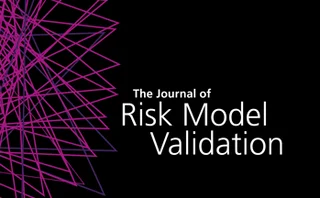Value-at-risk (VAR)
Active risk control
Richard Bibb explores the pitfalls of value-at-risk statistics and explains how they can be interpreted and incorporated into a meaningful risk management strategy
Being stressed is good for you
Increased regulatory focus means stress testing can no longer play a minor role in banks’ strategic thinking and capital considerations. Many institutions require cultural and procedural change to make this happen, but are they capable of bringing it…
A rotationally invariant technique for rare event simulation
Because of their low probability, including extreme events in Monte Carlo calculations of the value-at-risk of a credit-risky portfolio requires many simulations. Here, Susanne Klöppel, Ranja Reda and Walter Schachermayer demonstrate a geometrically…
Cutting edge: Visualising value-at-risk
Risk transparency is an important yet elusive goal of any risk management process. One challenge is to understand the diversification effects of the portfolio elements. Wentao Zhao and Kevin Kindall introduce a graphical technique based on value-at-risk…
Shortfall: who contributes and how much?
Understanding risk contributions is a key part of successful risk management and portfolio optimisation. Richard Martin extends the discussion from value-at-risk to expected shortfall and shows that saddlepoint approximation preserves the convexity…
Beyond comparative statics
David Rowe says it is time to extend stress testing to include more than just analysing the immediate impact of selected extreme events
Credit spread shocks: how big and how often?
The second half of 2007 saw violent moves in credit spreads. In the fallout, there has been much discussion about how to estimate the probabilities of these severe events, but few conclusions have been obtained beyond the fact that historical data is…
Calmer markets reflected in VAR figures
Lower volatility across asset classes in the second quarter of the year produced lower value-at-risk figures at almost all major banks, according to a Risk survey.
Credit spread shocks: how big and how often?
The second half of 2007 saw violent moves in credit spreads. In the fallout, there has been much discussion about how to estimate the probabilities of these severe events, but few conclusions have been obtained beyond the fact that historical data is…
The shock of the interaction
Banks have long talked about enterprise risk management, but many have historically measured risk types separately and aggregated the results. The financial crisis has highlighted that credit and market risk are closely linked. What are the challenges to…
The bank capital burden
Keenly awaited Basel II trading book rules were due to be decided upon as Risk went to press. Market participants worry the measures could retard the development of risk models and even kill off whole business lines Mark Pengelly reports
The shock of the interaction
Banks have long talked of enterprise risk management, but many firms have historically measured risk types separately and aggregated the results. The financial crisis has highlighted that credit and market risk are closely linked. What are the challenges…
Hard times for VaR
The Basel Committee's ambitious plan to overhaul VaR models is coming in for fierce criticism. By John Ferry
Error of VAR by overlapping intervals
When overlapping intervals in time series are used, volatility and price changes' percentiles are underestimated. Consequently, value-at-risk is also underestimated. Heng Sun, Izzy Nelken, Guowen Han and Jiping Guo measure the size of this underestimation
A vicious circle
Regulators are looking at how best to ensure capital adequacy rules are not pro-cyclical. The Basel Committee has proposed changes to its market risk rules, but further, counter-cyclical changes have been suggested. What is being considered and what are…










